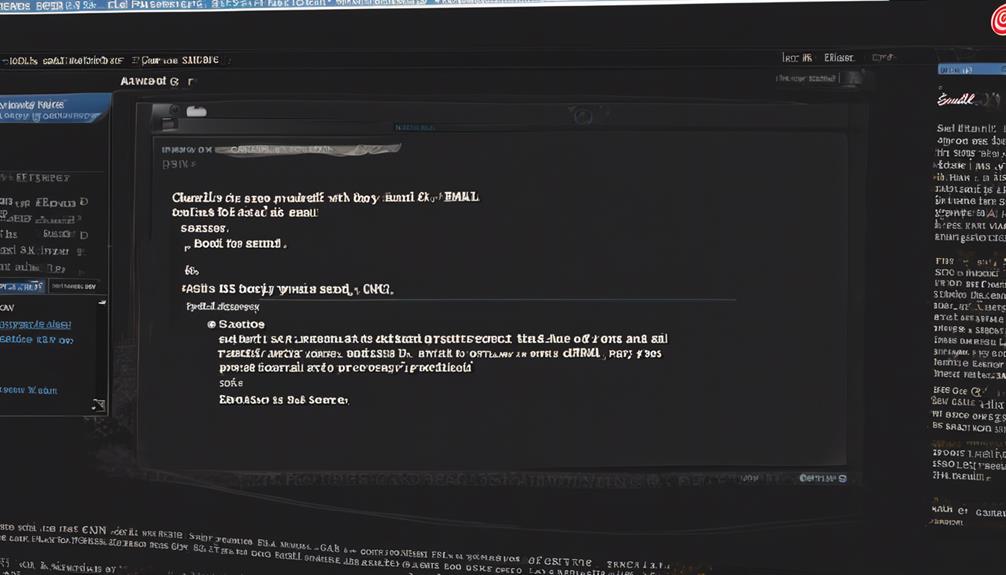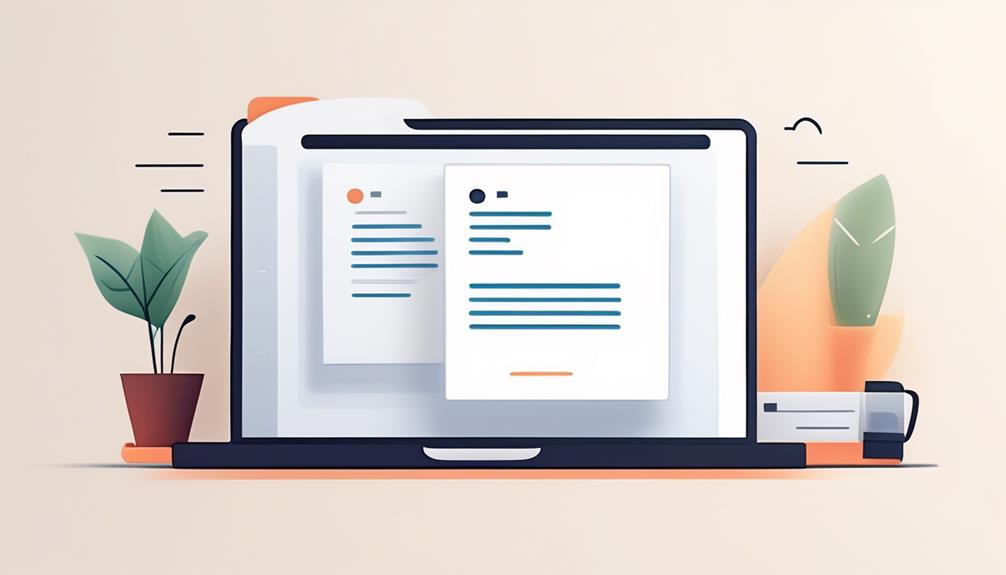Crafting a proposal email is akin to preparing the scene for an enthralling business showcase. Each word and detail must be carefully orchestrated to captivate and convince the recipients.
As professionals, we understand the importance of making a strong impression right from the start. But what if there were specific techniques and strategies that could elevate your proposal emails to new heights of effectiveness?
In this discussion, we'll explore the nuanced art of crafting proposal emails, from the initial approach to the final sign-off, offering practical insights that can make a tangible difference in your communication with potential clients.
Key Takeaways
- Proposal emails should be carefully crafted to engage and persuade the audience.
- The proposal should address the needs and goals of the recipients.
- A compelling subject line is crucial to grab the recipient's attention.
- The email should include a well-structured introduction and an attached document with detailed information.
Understanding Proposal Emails
Understanding proposal emails is vital for effectively communicating with potential clients and guiding them through the decision-making process. When writing a proposal, it's important to consider the needs of the email recipients. The proposal needs to address their pain points and offer a solution that aligns with their goals.
The proposal email format should be clear and well-structured, making it easy for the recipients to follow the information provided. Starting the proposal email with a compelling subject line is crucial to grab the recipient's attention and entice them to open the email.
Additionally, the email should start with a concise and persuasive introduction, clearly stating the purpose of the proposal. It's essential to include an attached document that contains detailed information about the proposal, including evidence, timeline, terms, conditions, and costs.
Different Types of Proposal Emails

So, let's talk about the different types of proposal emails. Understanding the various types, including solicited and unsolicited proposals, is crucial for crafting effective communication.
We'll also cover the structure of a proposal email and share some writing tips to help you create compelling proposals.
Types of Proposal
Different types of proposal emails cater to specific scenarios and recipient expectations, allowing for tailored communication to effectively convey the proposal's content. Here are the various types of proposal emails:
- Solicited Business Proposal: These are in response to a request for proposal (RFP) or a specific business opportunity.
- Unsolicited Proposals: These are proactive proposals sent to potential clients or partners without a prior request.
- Proposal Email to Offer: Used to present services, products, or solutions to a potential client or partner.
- Partnership Proposal: Aimed at establishing collaboration or partnership with another individual or organization.
Understanding the different types of proposal emails is crucial for crafting effective communication and increasing the chances of a favorable response. Whether it's writing a business proposal, using proposal templates, or creating a project proposal, selecting the appropriate type is essential for success.
Email Structure
When crafting various types of proposal emails, it's essential to structure the email effectively to convey the proposal's content and engage the recipient.
A business proposal email should begin with a clear and captivating subject line, followed by a professional greeting to address the potential client.
The body of the email should provide detailed client information, a well-articulated proposal, and a compelling call-to-action. Utilizing a business proposal email template can streamline the process and ensure consistency.
Furthermore, it's crucial to end the email with a professional email signature that includes contact information.
Writing Tips
Crafting various types of proposal emails requires attention to specific writing tips to effectively convey the proposal's content and engage the recipient. To ensure the effectiveness of your business proposal emails, consider the following writing tips:
- Clear and concise language: Use straightforward language to articulate your points and avoid ambiguity.
- Compelling subject line: Capture the recipient's attention with an engaging subject line that accurately summarizes the proposal's content.
- Personalized approach: Tailor the proposal to the recipient's needs and demonstrate a clear understanding of their requirements.
- Call to action: End the proposal with a compelling call to action that prompts the recipient to take the next steps.
Business Proposal Email Format

Crafting an effective business proposal email format is essential for capturing the recipient's attention and driving them to take action. When we write a business proposal email, it's crucial to follow a specific format to ensure clarity and professionalism.
The format typically includes:
- A clear and compelling subject line
- A personalized greeting to the client
- A well-structured body containing the proposed solution, pricing details, and next steps for action
- A professional closing with our signature.
This format helps to organize the information effectively and guide the client through the proposal in a coherent manner.
In the body of the email, it's essential to address the client's specific needs and provide detailed information to support our proposed solution. By focusing on the client's requirements and demonstrating a clear understanding of their needs, we can make the proposal more compelling and relevant.
Additionally, personalizing the email and using a professional tone throughout the format can significantly impact the recipient's perception and engagement with the proposal.
Subject Lines for Business Proposal Emails

To maximize the impact of our business proposal emails, we carefully consider the subject lines, which play a crucial role in capturing the recipient's attention and prompting them to open the email. When crafting subject lines for business proposal emails, we need to ensure they're compelling and relevant to the recipient. Here are key strategies to consider:
- Be Clear and Informative: Clearly state the purpose of the email in a formal business proposal. For example, 'Business Proposal for New Marketing Strategy' provides clarity to the recipient about the content of the email.
- Create Intrigue: Use informal subject lines to pique interest and curiosity, especially when reaching out to potential clients. An example could be 'Revolutionizing Your Marketing Approach.'
- Offer Solutions: Address the recipient's needs directly in the subject line. For instance, 'Increasing Sales with Innovative Marketing Solutions' indicates a focus on providing solutions for the recipient's sales concerns.
- Personalize When Possible: Incorporate the recipient's name or company to make the subject line more personalized. 'Customized Marketing Proposal for XYZ Company' demonstrates a tailored approach to the recipient's business.
Starting a Business Proposal Email

As we dive into the process of initiating a business proposal email, it's essential to understand the pivotal role of the initial communication in capturing the recipient's attention and laying the foundation for a compelling proposal. When starting a business proposal email, we need to consider the potential clients' needs and tailor our approach accordingly. Here are some key elements to consider when writing a business proposal email:
| Key Element | Description |
|---|---|
| Understanding Potential Clients' Needs | Research and understand the specific needs and pain points of the potential clients. Tailoring the proposal to address these needs increases the likelihood of a positive response. |
| Crafting a Compelling Subject Line | The subject line should be concise, engaging, and relevant to the recipient. It should pique their interest and prompt them to open the email. |
| Personalized Greeting | Address the recipient by their name and personalize the greeting. This demonstrates professionalism and indicates that the email is tailored specifically to them. |
Email Opening Lines and Body
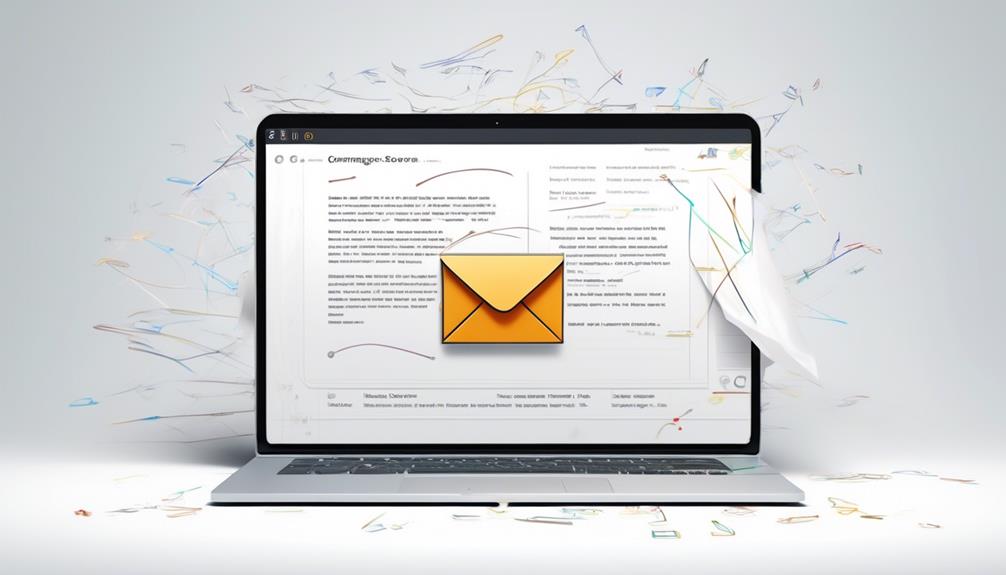
When crafting a proposal email, the opening line serves as the first impression, so we aim to make it attention-grabbing and relevant to the recipient's needs.
The body of the email should succinctly summarize the proposal while providing a hook or promise of value to capture the recipient's interest.
Our goal is to emphasize how our proposal directly addresses the client's needs while maintaining a personalized and professional tone throughout the email.
Greeting and Introduction
We are thrilled to present a comprehensive proposal outlining our solution to address the challenges facing your organization.
When writing a business proposal email, the introduction sets the tone for the entire communication. Here are some key points to consider when crafting your greeting and introduction:
- Objective Statement: Clearly state the purpose of the email and what you aim to achieve.
- Social Proof: Include brief, relevant information about your company's achievements or successes to build credibility.
- Personalization: Address the potential client by name and demonstrate understanding of their specific needs.
- Establishing Rapport: Use language that fosters a sense of connection and understanding.
Crafting a compelling introduction in your business proposal email can make a significant impact on how your message is received. It's crucial to engage the reader from the very beginning and set the stage for a successful network of communication.
Purpose and Context
In crafting the opening lines and body of a business proposal email, we aim to provide a clear and compelling context that resonates with the recipient's needs and objectives. When writing a proposal email, it's crucial to clearly outline the purpose of the email outreach and the context in which the proposal is being presented.
Understanding the potential client's business, challenges, and goals is essential for tailoring the proposal to address their specific needs. Clearly articulating the purpose and context of the email sets the stage for a successful engagement with the recipient.
Whether it's introducing a new project or seeking collaboration on a business proposal, the email should clearly convey the value proposition and relevance to the recipient. Crafting a purposeful and context-rich email body demonstrates professionalism and consideration for the recipient's interests, fostering a positive impression and engagement.
Request for Action
To prompt immediate engagement and response, our proposal email opening lines and body must succinctly convey the value proposition and outline the next steps for the recipient. When crafting the request for action in the email opening lines and body, it's crucial to make your objective clear and ask for the desired outcome.
Here are key elements to include in the email to evoke an emotional response in the audience:
- Personalized demographic information that tells the recipient you understand their specific needs.
- A clear objective statement that outlines the benefits the recipient will gain from engaging with the proposal.
- A compelling call-to-action that encourages the recipient to take the next steps.
- A respectful and confident ask, making it easy for the recipient to respond.
Ending a Proposal Email
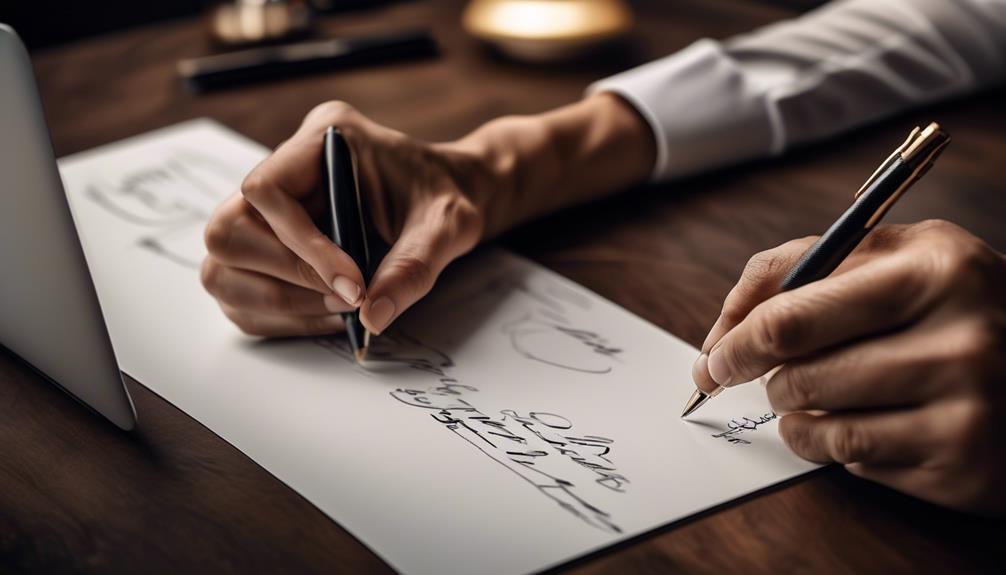
As we conclude the proposal email, it's essential to succinctly summarize the key points and emphasize the next steps for further action.
The ending of a proposal email should leave a lasting impression by reiterating the essential elements of the proposed solution and the potential financial impact on the client's business.
We should clearly outline the call-to-action, whether it's scheduling a follow-up meeting, requesting feedback, or any specific action needed from the client.
Expressing gratitude for the recipient's time and consideration is crucial at this stage. We want to convey our enthusiasm for the possibility of working together and addressing the needs of our potential clients.
Closing with a professional sign-off, such as 'Sincerely,' or 'Thank you for your consideration,' adds a personal touch to the conclusion.
Lastly, it's important to provide complete contact information for easy communication.
Professional Email Signature

When it comes to crafting a professional email signature, there are key points to consider.
Designing an effective signature that includes essential information like your name, job title, and contact details is crucial for clear identification and accessibility.
Furthermore, maintaining brand consistency in your signature can help strengthen your professional image and leave a positive impact on the recipient.
Designing an Effective Signature
Crafting an effective professional email signature is essential for establishing credibility and providing easy contact information in a proposal email. When designing your signature, consider the following tips to evoke an emotional response in the audience:
- Name and Job Title: Including your name and job title adds a personal touch and helps recipients know who they're communicating with.
- Company Details: Adding your company name and logo showcases professionalism and reinforces your association with a reputable organization.
- Contact Information: Providing your email address and phone number makes it convenient for recipients to reach out to you.
- Professional Accolades: Incorporating recognized qualifications or certifications can further enhance your credibility in the eyes of the recipient.
Importance of Brand Consistency
Ensuring brand consistency in professional email signatures not only reinforces our company's identity but also fosters trust and recognition among our recipients. It's an essential part of writing a proposal, as it reflects our professionalism and attention to detail.
Consistent branding across all communication channels, including email signatures, is one of the best practices in maintaining a cohesive brand image. This consistency not only enhances brand recognition but also builds credibility with both existing clients and potential business partners.
A uniform email signature reinforces our brand's values and creates a polished image, reflecting positively on our brand. Ultimately, brand consistency in email signatures plays a crucial role in reinforcing trust and reliability in the minds of our recipients, making it an integral aspect of any sales proposal.
Proposal Email Samples
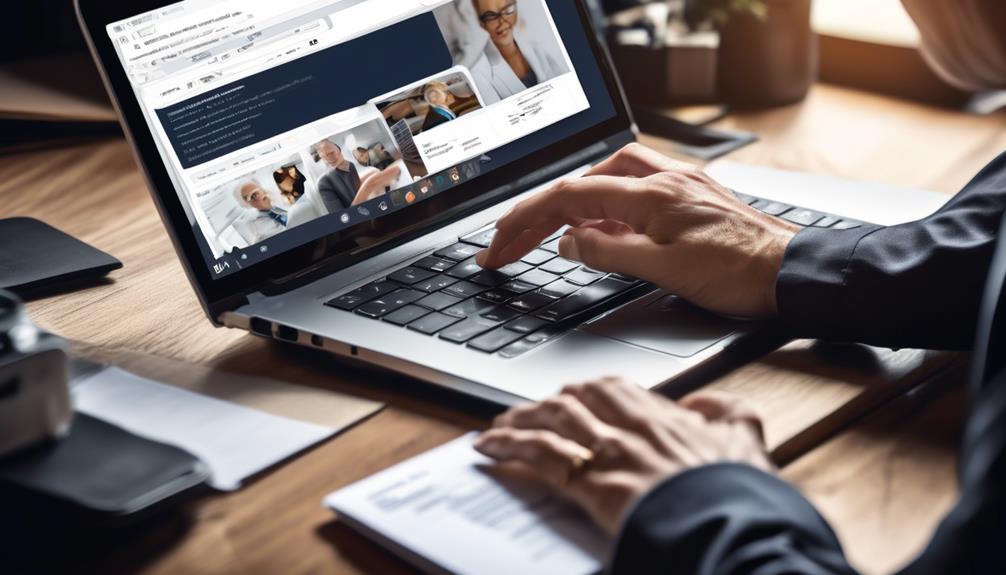
To illustrate the concept of proposal email samples, let's examine a real-life example that effectively demonstrates the key components of a successful proposal email.
In this solicited proposal email to a potential client for a website redesign project, we can see the following key elements:
- Personalized Introduction: The email begins with a warm greeting and a personalized opening line that shows genuine interest in the client's business.
- Problem Identification: The email concisely outlines the current challenges the client is facing with their website, demonstrating a clear understanding of their needs.
- Tailored Solution: It presents a customized and detailed proposal for the website redesign, addressing the specific pain points discussed and showcasing how the proposed solution aligns with the client's goals.
- Clear Call to Action: The email concludes with a clear call to action, inviting the client to discuss the proposal further in a follow-up meeting or call.
Proposal Email Template
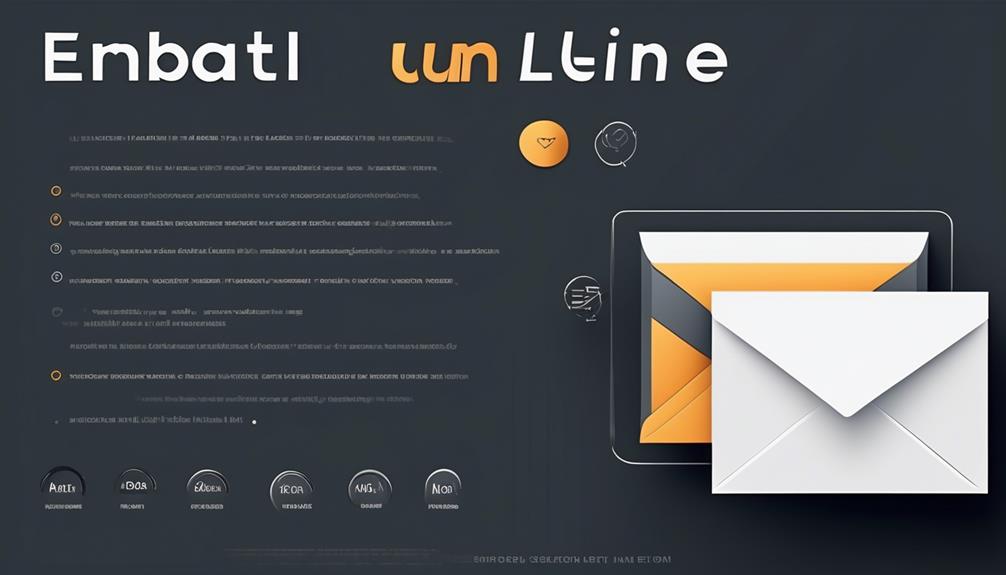
When crafting a proposal email template, it's essential to structure it in a clear and compelling manner to effectively communicate the proposed solution and desired outcomes to the recipient.
Whether it's a solicited or unsolicited business proposal, the email template should follow a formal business format.
The template should include a subject line that succinctly captures the essence of the proposal, a professional greeting, a well-crafted opening line and body that discusses the details of the proposed solution, a clear statement of the proposed price, and the next steps.
It's important to tailor the template to the specific needs and preferences of the recipient, ensuring that the email is personalized and relevant.
Additionally, the email should express gratitude for the opportunity to submit the proposal and clearly define the problem that the proposed solution aims to address.
Business Inquiry Email Examples
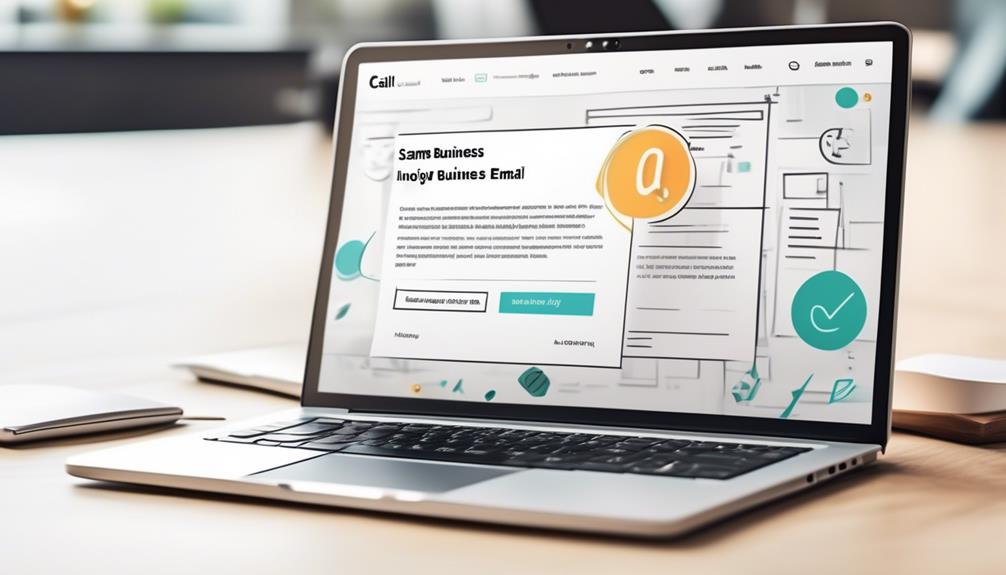
Here are some examples of effective business inquiry emails that have yielded positive responses and opened doors to potential opportunities.
- Subject Line: Exploring Potential Collaboration
*Body: Greetings! My name is [Your Name], and I represent [Your Company]. We're impressed by your company's innovative approach and would love to discuss a potential collaboration that could mutually benefit both our businesses. We believe that our combined expertise could lead to exciting opportunities. Please let's know if you're open to a discussion.*
- Subject Line: Inquiry About Your Services
*Body: Hello [Recipient's Name], I hope this email finds you well. I came across your company's impressive portfolio and am interested in learning more about the services you offer. I believe that there may be potential synergies between our businesses. I look forward to the possibility of exploring this further.*
- Subject Line: Seeking New Partnerships
*Body: Hi [Recipient's Name], I hope you're doing great. I'm reaching out to express our interest in exploring potential partnerships with your company. We've been following your work closely and believe that there could be exciting opportunities for collaboration. I'd love to discuss this further at your earliest convenience.*
- Subject Line: Collaboration Opportunity
*Body: Dear [Recipient's Name], I trust this message finds you well. We're interested in exploring potential collaboration opportunities with your company. Your expertise in [specific area] aligns with our current business goals, and we're eager to discuss how we can work together to achieve mutual success. Looking forward to your response.*
These examples showcase the essence of a business inquiry email, demonstrating the importance of a well-crafted initial communication to pique the interest of a potential client. By including social media links and the email address in the signature, the email becomes more accessible and professional, setting the stage for a fruitful conversation.
Writing a Business Proposal Email Draft
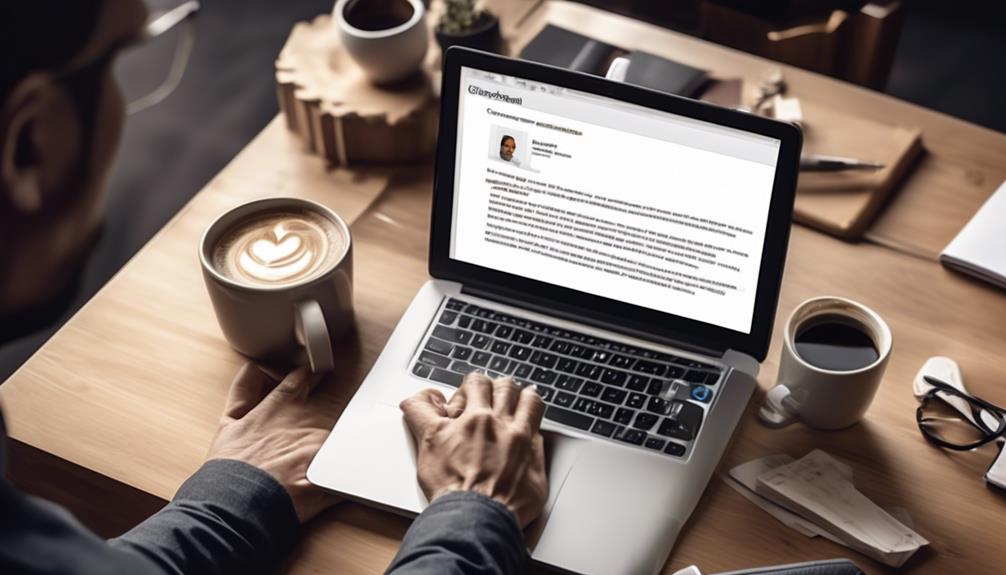
After exploring effective business inquiry email examples, it's essential to craft a compelling and well-structured business proposal email draft that captures the recipient's attention and conveys the intended message effectively.
When writing a business proposal email draft, it's crucial to use a clear and persuasive language to convey the necessary information to the client. The draft should include:
- A statement of gratitude to express appreciation for the opportunity
- A concise definition of the problem the client is facing
- A proposed solution that addresses the client's needs
- Key terms such as pricing and deliverables
- Clear next steps for the client to consider
Utilizing a business proposal email template can streamline the process and ensure a professional format. The email should follow a structured format, including:
- A subject line
- Greeting
- Opening line and body that details the proposal
- A compelling ending that encourages further discussion
- A professional signature
Business Proposal Email Top Tips

We recommend employing actionable language and a compelling tone to engage potential clients in crafting effective business proposal emails. To make the most impact, consider the following top tips:
- Personalize Your Approach: Tailoring the proposal to the recipient's specific needs and interests shows that you've taken the time to understand their business, creating a strong connection from the outset.
- Highlight Benefits: Focus on how your proposal can help the potential client achieve their goals. Emphasizing the benefits they'll receive from your solution can evoke a positive emotional response.
- Create Urgency: Communicate the value of your proposal and the consequences of not acting upon it. Urgency can stimulate a sense of need and prompt the recipient to take action.
- Simplify the Call-to-Action: Clearly outline the next steps and make it easy for the recipient to respond. A straightforward call-to-action can lead to a quicker decision, saving time for both parties.
Incorporating these tips can help you create a compelling business proposal email that resonates with your potential clients, ultimately increasing your chances of success in securing new opportunities.
Can the Same Format and Structure Used for a Proposal Email be Adapted for a Referral Email?
When it comes to writing effective referral emails, a lot of the same format and structure used for a proposal email can be adapted. Both types of emails should start with a clear subject line, a personalized greeting, and a brief introduction before diving into the main content.
Frequently Asked Questions
How Do I Write a Professional Email Proposal?
We start by writing a professional email proposal. We ensure it's clear, concise, and persuasive. We use appropriate language for a sophisticated audience.
We express gratitude, define the problem, propose a solution, and outline next steps. Our format includes a strong subject line, greeting, opening line, body, ending, and signature.
We enhance effectiveness with professional email endings, signatures, and samples. This approach ensures our professional email proposal stands out and delivers results.
How Do You Pitch a Proposal via Email?
When we pitch a proposal via email, we focus on crafting a compelling subject line to grab the recipient's attention.
We personalize the greeting and concisely outline the objective, proposed solution, pricing, and next steps in the body.
By maintaining a professional tone and including a clear call to action, we enhance the email's impact.
Our signature emphasizes credibility, and we ensure the email is visually appealing for maximum engagement.
How Do You Write a Good Proposal Example?
When writing a good proposal example, we focus on presenting our ideas with clarity and impact. We emphasize the benefits and value we offer, using persuasive language and supporting evidence to highlight our strengths.
Our goal is to create a compelling case that captures attention and motivates action.
We structure our proposal with a clear timeline, key terms, conditions, and costs, ensuring every detail contributes to a persuasive and engaging narrative.
How Do You Write a Professional Email Offering Services?
We write professional emails offering services by:
- Crafting a compelling subject line
- Addressing the recipient personally
- Clearly outlining how our services meet their needs
We provide a detailed proposal, including:
- Benefits
- Pricing
We conclude with a clear call-to-action.
Using templates saves time and ensures consistency.
This approach enhances our professional image and increases the likelihood of the recipient taking the next step.
Conclusion
In conclusion, writing a compelling proposal email is essential for success in business.
Did you know that 86% of professionals believe that email is their preferred mode of communication for business purposes?
By following the steps outlined in this article, you can effectively communicate your value proposition and win over potential clients through well-crafted proposal emails.
So, make sure to put in the effort to create a strong and persuasive proposal email for your business success.

